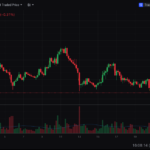Hedging is a fundamental strategy in the world of trading, offering a way to reduce potential losses and safeguard investments in uncertain market conditions. For both beginners and seasoned traders, understanding and utilizing hedging can provide a significant edge in managing risk while pursuing profit. Here’s an in-depth look at how hedging works, its benefits, and practical examples to enhance your trading strategy.
What is Hedging?
Hedging involves taking an offsetting position in a related security or financial instrument to mitigate the risk of adverse price movements. In essence, it’s like buying insurance for your portfolio. By reducing potential downside, hedging allows traders to navigate volatile markets with greater confidence.
For example:
- An investor holding a stock may buy a put option to protect against potential price drops.
- A trader with exposure to a currency pair might use futures contracts to lock in exchange rates.
Why is Hedging Important?
Markets are inherently unpredictable, and external factors like economic reports, geopolitical events, and market sentiment can influence prices. Hedging helps:
- Protect Against Losses: Minimize the impact of adverse price movements.
- Provide Stability: Ensure consistent portfolio performance, even in volatile conditions.
- Enhance Strategic Flexibility: Free up traders to take calculated risks without jeopardizing the overall portfolio.
Popular Hedging Strategies
- Options Hedging:
Use call and put options to protect against unfavorable moves. For example, purchasing a put option gives the right to sell an asset at a set price, limiting potential losses. - Futures Contracts:
Lock in prices for assets like commodities or currencies to avoid being affected by market fluctuations. - Pairs Trading:
Simultaneously buy one security and short another within the same industry to capitalize on price discrepancies while neutralizing sector-wide risk. - Inverse ETFs:
Use inverse exchange-traded funds to profit from market declines. For example, holding a standard ETF and an inverse ETF provides balance during downturns. - Currency Hedging:
Protect against foreign exchange risk by using currency futures or options. This is especially useful for multinational investors or companies with cross-border operations.
Practical Example of Hedging
Imagine you own shares in a technology company. While optimistic about its long-term growth, you’re concerned about short-term market volatility. To hedge:
- Buy a put option on the stock, ensuring the right to sell it at a specified price.
- If the stock’s value drops, the gains from the put option can offset the losses in the stock, stabilizing your portfolio.
Benefits and Limitations
Benefits:
- Reduces risk and potential losses.
- Provides a safety net in uncertain markets.
- Allows traders to maintain exposure to high-risk/high-reward assets.
Limitations:
- Hedging can reduce profits when markets move favorably.
- The cost of hedging (e.g., options premiums) may outweigh the benefits for small portfolios.
- Requires a deep understanding of financial instruments and strategies.
Is Hedging Right for You?
Hedging is not a one-size-fits-all strategy. It’s ideal for:
- Investors with significant exposure to a single asset or sector.
- Traders navigating highly volatile markets.
- Businesses looking to stabilize earnings against currency or commodity fluctuations.
However, casual investors with small portfolios might find the costs of hedging to be prohibitive. Instead, diversification may serve as a simpler alternative.
Conclusion
Hedging is a valuable tool in a trader’s arsenal, offering a way to protect investments and manage risk effectively. By understanding how to implement hedging strategies like options, futures, and pairs trading, traders can navigate market volatility with greater confidence.
Whether you’re a seasoned trader or just starting, incorporating hedging into your trading plan can provide long-term benefits. However, always weigh the costs and complexity against your investment goals before diving in.
Disclaimer: This article is for informational purposes only and does not constitute financial advice. Always consult with a financial advisor or conduct thorough research before making investment decisions.







